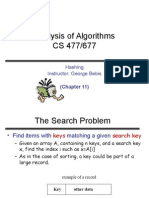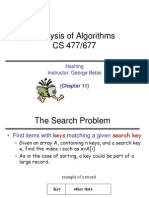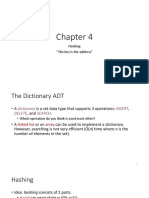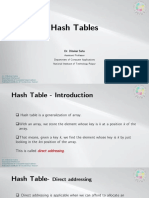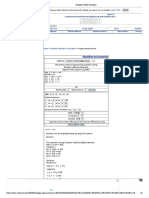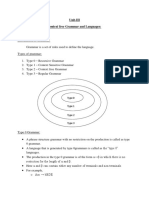0% found this document useful (0 votes)
7 views57 pagesLecture 6
This document covers data structures and algorithms, focusing on hash tables and binary search trees. It discusses the search problem, the concept of dictionaries, and various methods for handling collisions in hash tables, including chaining and open addressing. Additionally, it explains hash functions, their properties, and the binary search tree structure and its properties.
Uploaded by
beezosjefferyCopyright
© © All Rights Reserved
We take content rights seriously. If you suspect this is your content, claim it here.
Available Formats
Download as PDF, TXT or read online on Scribd
0% found this document useful (0 votes)
7 views57 pagesLecture 6
This document covers data structures and algorithms, focusing on hash tables and binary search trees. It discusses the search problem, the concept of dictionaries, and various methods for handling collisions in hash tables, including chaining and open addressing. Additionally, it explains hash functions, their properties, and the binary search tree structure and its properties.
Uploaded by
beezosjefferyCopyright
© © All Rights Reserved
We take content rights seriously. If you suspect this is your content, claim it here.
Available Formats
Download as PDF, TXT or read online on Scribd
/ 57
